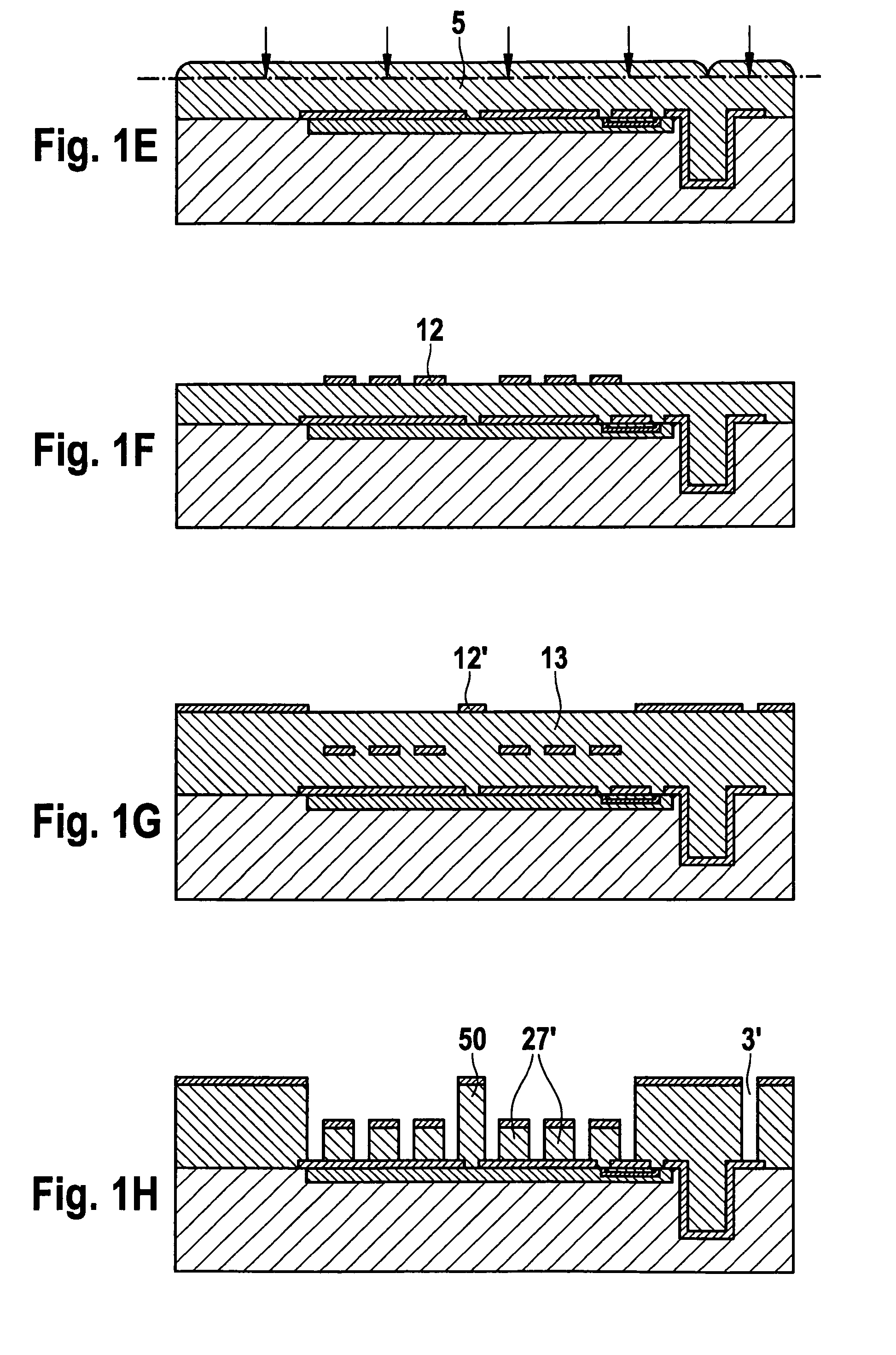Method for producing a micromechanical component having a filler layer and a masking layer
a technology of filler layer and masking layer, applied in the direction of microelectromechanical systems, microstructural devices, microstructural technology, etc., can solve the problems of cap wafers that must be laboriously patterned and complete filling
- Summary
- Abstract
- Description
- Claims
- Application Information
AI Technical Summary
Benefits of technology
Problems solved by technology
Method used
Image
Examples
Embodiment Construction
[0024]FIG. 1A schematically depicts a substrate material 2, for example silicon, having a circuit region 21 and a conductive path 20. A third mask layer 14, made e.g. of silicon nitride, is applied on a first side 6 of substrate material 2. FIG. 1B schematically depicts the manner in which a trench structure 3 was produced in substrate material 2. By way of a subsequent (e.g. LOCOS) process, a first insulating layer 4 is deposited on substrate material 2, the walls and floor of trench structure 3 being covered by first insulating layer 4 (FIG. 1C). The regions in which third mask layer 14 were applied remain free of third insulating layer 4, however. After the removal of third mask layer 14, for example by way of an etching step, gaps are created in first insulating layer 4 (FIG. 1D). Both these gaps and first trench structure 3 are filled up by a first filler layer 5 that is made, for example, of doped silicon (FIG. 1E); first filler layer 5 can grow in monocrystalline fashion into...
PUM
| Property | Measurement | Unit |
|---|---|---|
| electrical resistance | aaaaa | aaaaa |
| height | aaaaa | aaaaa |
| structure | aaaaa | aaaaa |
Abstract
Description
Claims
Application Information
 Login to View More
Login to View More - R&D
- Intellectual Property
- Life Sciences
- Materials
- Tech Scout
- Unparalleled Data Quality
- Higher Quality Content
- 60% Fewer Hallucinations
Browse by: Latest US Patents, China's latest patents, Technical Efficacy Thesaurus, Application Domain, Technology Topic, Popular Technical Reports.
© 2025 PatSnap. All rights reserved.Legal|Privacy policy|Modern Slavery Act Transparency Statement|Sitemap|About US| Contact US: help@patsnap.com



